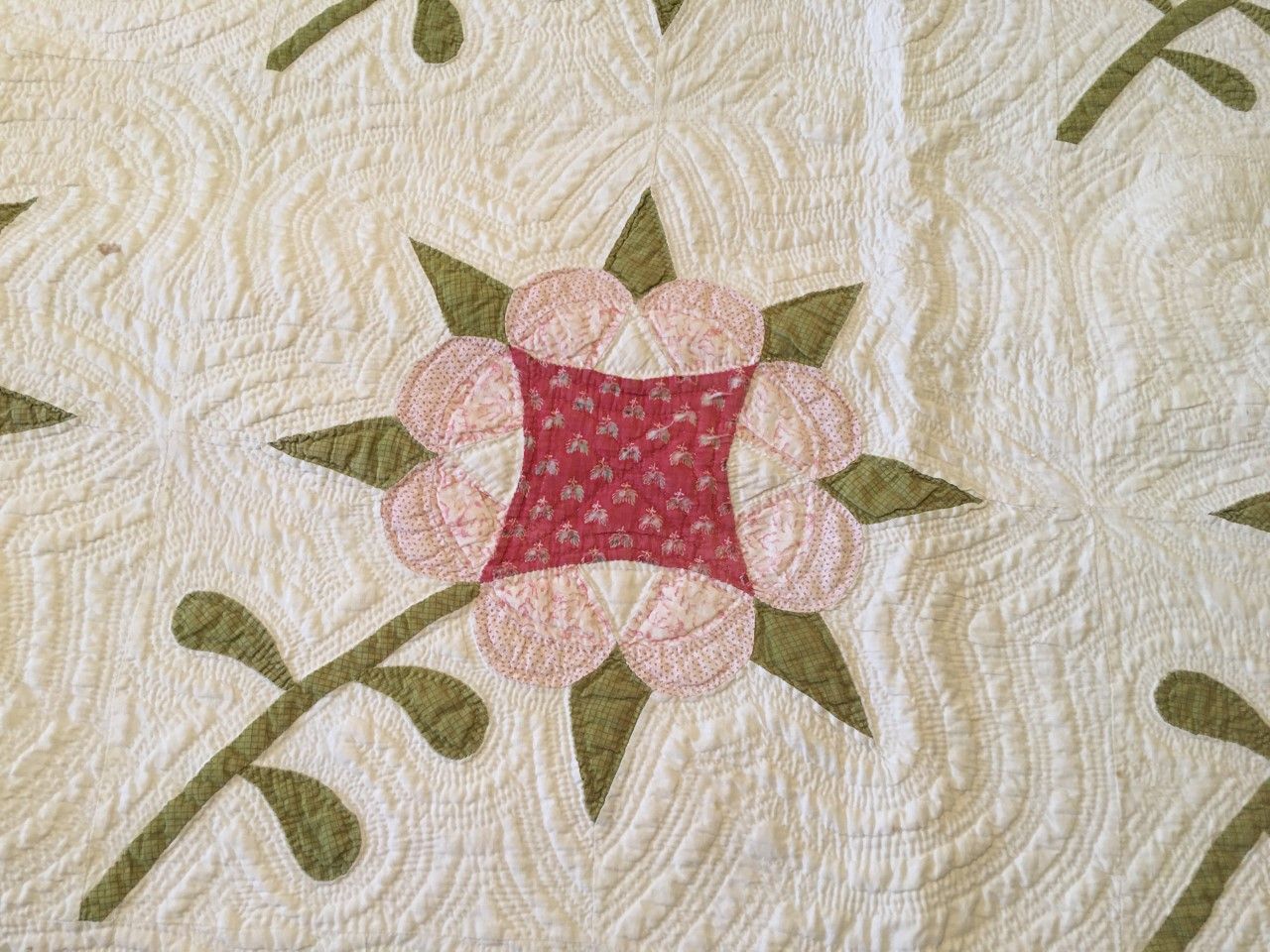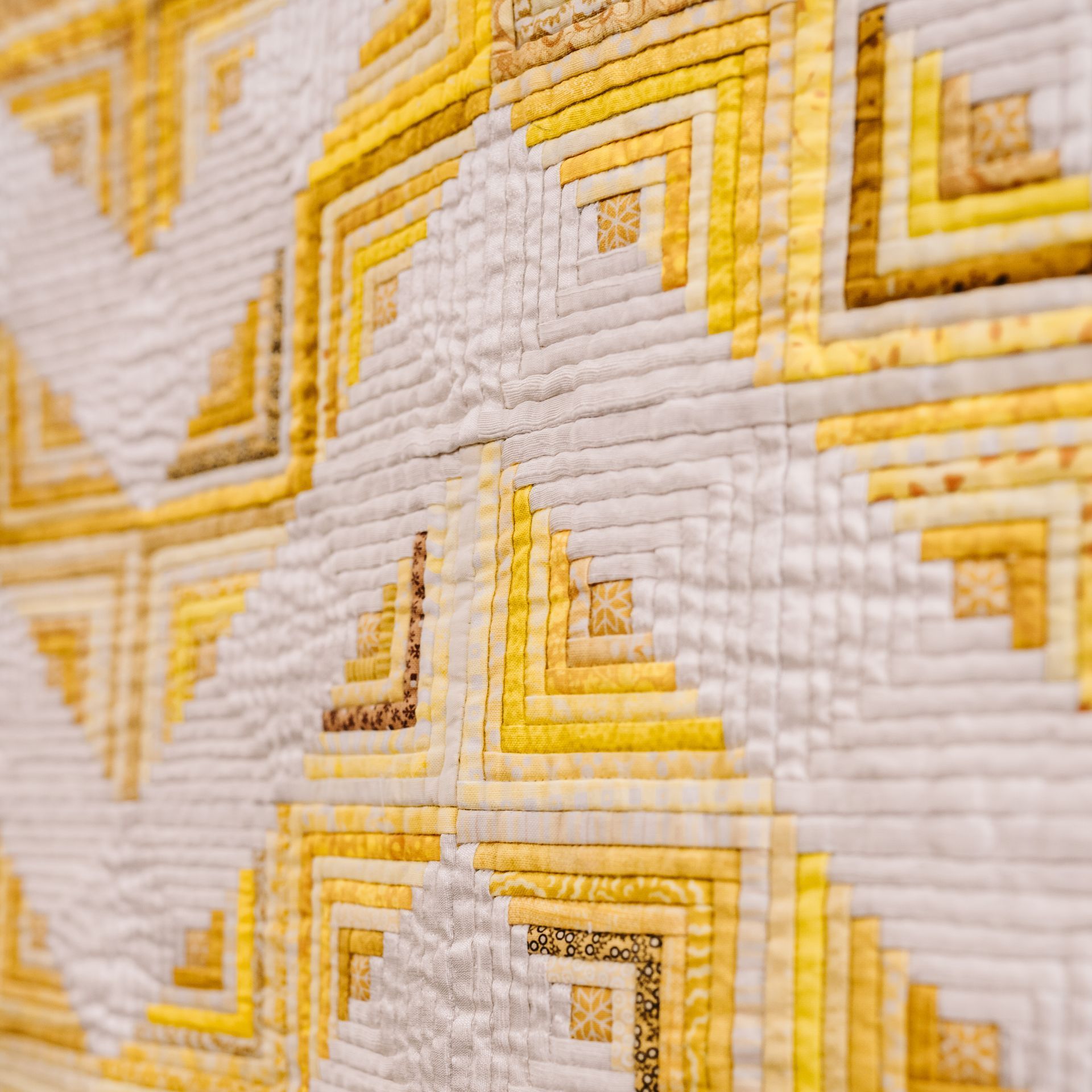Quilt History Snippets September 2025
What: Review of Uncoverings 1994, Volume 15 of the Research Papers of the American Quilt Study Group, edited by Virginia Gunn
Topic: “Weaving Cloth and Marketing Nostalgia Clinch Valley Blanket Mills, 1890-1950”
Author: Kathleen Curtis Wilson
While it is not about quilting, this article provides revealing background information on industrialized production of woven coverlets during the first half of the twentieth century. In particular, the use of clever marketing techniques and the influence of those techniques on the buying public. Interestingly enough, there is an unintended parallel, to some degree, to the later development of the fallacious but widespread belief system regarding quilts and the underground railroad which was established by the book Hidden in Plain View (HIPV). It makes for some very interesting reading.
Wilson begins her report noting that the company, the Clinch Valley Blanket Mills, “served as model of clever marketing, crafts revival, and quality workmanship” and that its “story reveals an interesting aspect of the Arts and Crafts Revival in Southern Appalachia.” Notably, the owners, “the Goodwin family capitalized on the demand for colonial style textiles to successfully sell products in distinctly different markets, influencing the public’s attitude toward Appalachian weaving for over sixty years.” [p. 169]
Wilson takes time to explain and describe economic and cultural conditions in the region during the time this company was functioning. It took place in an “extremely remote and rural” area of the American Southern Highlands. Communities were very small, oftentimes with fewer than 2,500 people. Education was minimal and good paying jobs were not commonly available. Hand quilting, spinning, dyeing, and weaving of most domestic textiles including woven coverlets were done at home. As Wilson notes, “Coverlet weaving was an art expression that took considerable time and talent to accomplish and Appalachian women never stopped weaving for their families, as did women in other parts of the country.” [p. 170; Wilson cites her sources of information and research funding with this statement.]
By way of explaining why this weaving activity among Appalachian women was not commonly known and reported upon, Wilson posits that because weaving was not a social activity, editors of popular magazines and journals were not interested in publishing articles about coverlet weaving. [p. 171]
Helpfully, Wilson also discusses the development of the Arts and Crafts movement in Appalachia. She drops names like “social reformers and surveyors…John C. and Edith Dame Campbell and Allen Eaton” who “worked for the Russell Sage Foundation, founded in 1909 and instrumental in supporting the development of an indigenous Arts and Crafts movement in Appalachia” which defined the mountain crafts revival and developed sales markets beyond the local level.” [p. 171] Wilson asserts that it was this activity that “generated interest in and sales of ‘Colonial Reproduction’ coverlets, products which became the foundation of the Clinch Valley Blanket Mills and the communities that supported and relied upon the mills for economic and social support for approximately sixty years.
What follows is a fascinating tale of how the blanket mill became a remarkable success story using textile production expertise as well as perceptive and intuitive marketing prowess within a family which included father and four sons as well as sisters and wives. They did it all in a hands-on, hard-work manner working alongside their neighbors, friends, and employees during an international economic depression and world war. In the process they provided work for people who had very little else to rely upon. They supported their local communities in ways outsiders could not or would not.
There is also note taken of fact that there was significant deception involved in their marketing, or as Wilson says, “…the mill’s marketing distracted the buying public.” [p. 194] Wilson explains and describes how this came about noting, “while marketing colonial-style coverlets was based on nostalgia, much of [what was marketed as hand] weaving had become factory production.” [p. 197]
Where I believe Wilson’s thesis intersects with our more recent HIPV controversy is her statement that, “The Goodwin family members successfully sold their products in distinctly different markets and influenced the attitude many ‘outlanders’ still have toward Virginia mountain weavers. Their innate marketing skill was masterful and, at times, deceptive; but successful marketing, then and now, is based on perception.” So it was with codes in the quilts, a myth we are still trying to debunk.
There are good black and white images to illustrate woven coverlet patterns and a generous endnotes section at the end of this report. I recommend it to everyone even if you have only a glancing interest in woven coverlets.
Best wishes and safe travels. See y’all in Maine at Seminar.
Share Post




